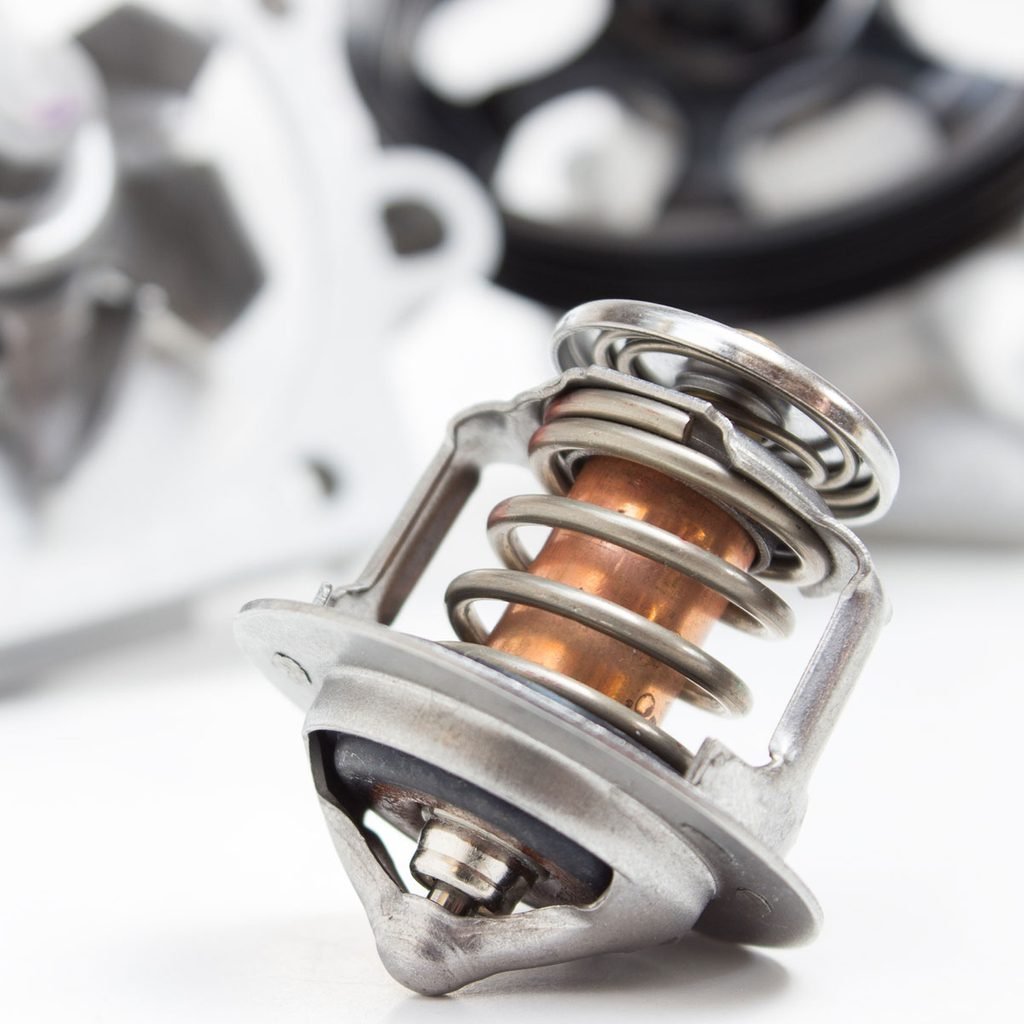What Should I Do If My Car Thermostat Starts to Fail?
Updated: May 05, 2022

A car's thermostat is a simple and straightforward device. But if it fails, it could lead to serious problems. Learn more about diagnosing the signs of a failing car thermostat.
On This Page
Car Thermostat Overview
A car’s thermostat regulates the flow of coolant through the engine and is an essential part in the operation of your vehicle. In most cases, an overheating or no-heat condition in your vehicle is due to a faulty thermostat. And since the T-stat price is only about $8, it makes more sense to replace it than to spend hours diagnosing the problem. If that doesn’t fix it, you’ve only spent about two hours learning how to replace a thermostat.
Symptoms of a Failing Car Thermostat
Fortunately, a thermostat failure is one of the many car problems your can diagnose and fix yourself. Here are the signs your car thermostat is failing:
- The temperature gauge reads high and the engine overheats.
- The temperature changes erratically.
- The vehicle’s coolant leaks around the thermostat or under the vehicle.
Engine Overheating
Here’s how thermostats work. The manufacturers inject a mixture of ground-up brass and wax into a copper cup called a pellet. Then they slip a highly-polished metal rod through a rubber “O-ring” gasket and into the wax. The pellet is sealed with a crimp ring.
Next, a metal “skirt” is welded around the pellet. When the engine is cold, a spring forces the skirt up against a seat (just like a closed faucet), stopping the flow of coolant. As the engine heats up, the wax melts and expands.
Expansion pressure builds to the point where the wax tries to “spit out” the metal rod. But the rod can’t go anywhere. It’s attached to a “bridge” on the other side of the thermostat.
Eventually the pellet itself moves, overcoming the spring’s pressure. So the thermostat opens and allows coolant to flow. The entire system works well until the metal rod corrodes. That corroded rod damages the rubber seal and the wax leaks out. Once that happens, the thermostat stops opening, coolant stops flowing and your engine overheats. The result can be catastrophic engine failure costing several thousand dollars.
Erratic Temperature Changes
Keep an eye on your dashboard’d temperature gauge. If the needle spikes and drops, a thermostat failure may be to blame.
Coolant Leaking
Check the thermostat housing for leaked fluids. The coolant helps to keep your engine functioning at the right temperature, and the lack of fluid can affect its performance.
How to Test a Car Thermostat
Before removing the thermostat from your vehicle, check the coolant flow and temperature.
Remove the radiator cap and idle the engine. If the coolant flows right away, your thermostat is stuck open. If it is not flowing, wait until your engine warms up. The coolant should warm to the right temperature and begin to flow after 10 to 20 minutes. If it does not start to flow, but the temperature gauge on your dashboard rises, your thermostat is stuck closed. If your coolant flows normally, there may be another cause of your overheating engine.
To check the temperature of your coolant, start with a cool radiator and engine. Idle your engine and use a thermometer to read the engine block or cylinder head temperature. Then, check the temperature of the upper radiator hose. Wait five minutes and test again. Complete the test a total of three times. If the temperature does not rise by much, your thermostat is stuck open. If the radiator hose remains about the same temperature, but the dashboard gauge rises dramatically, your thermostat is stuck closed. If the upper radiator hose rises to about the same temperature as the engine block, your thermostat is allowing the coolant to flow properly. You may have a different problem causing cooling issues.
To test the thermostat outside of the car, place it in a pot of water on your kitchen stove. Do not let the thermostat touch the bottom of the pot. Use a thermometer to see the temperature at which the thermostat opens. Note the temperature when it begins to open and when it finished opening completely. Remove it from the pot. Observe as it cools to see that is closes gradually. Compare your notes to your owner’s manual.
Replacing the Thermostat
If your thermostat fails, don’t just replace it and top off the coolant reservoir. It’s sending you a message of a more serious problem — the corrosion inhibitors in your coolant also failed. So flush the system and add fresh coolant any time you replace the thermostat.
And don’t try to save a few dollars by buying a cheap thermostat (about $5). Premium thermostats are built to resist corrosion. The difference in price is small compared with the potential engine damage. Some manufacturers even offer “fail-safe” models that fail in the fully open position to prevent engine overheating.